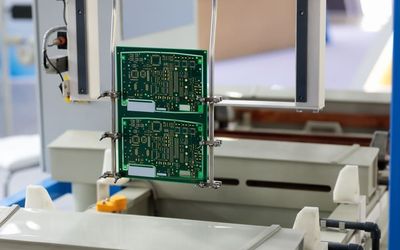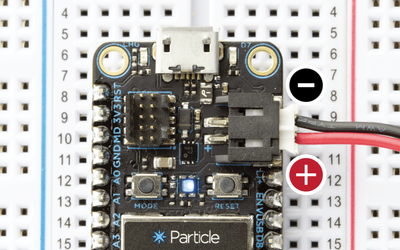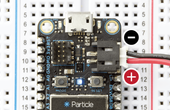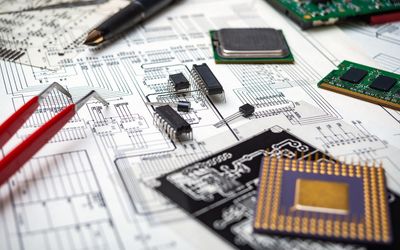STMicroelectronics X-NUCLEO-OUT17A1 Digital Output Expansion Board
Digital expansion board for evaluation of IPS8200HQ-1 solid state relay modules.
Technical Specifications
| Product Type | Output Expansion Board |
| Operating Voltage Range | 10.5 to 36 Volts |
| Operating Output Current | Up to 1 Ampere |
| Protection Features | Overload and overtemperature protection, loss of ground protection, supply rail reverse polarity protection |
| Compaitble WIth | STM32 Nucleo Development boards |
| Application with | Programmable Logic Controllers |
| Compliance | RoHS and China RoHS |
Overview
STMicroelectronics X-Nucleo-OUT17A1 can interface with various microcontrollers such as the STM32 Nucleo using STISO620, STISO621, and Arduino UNO R3-compatible connectors. It allows for connecting multiple loads across various channels, featuring an extended voltage range of up to 36 Volts. There are dedicated indicator pins for SPI configuration and diagnostic indications. Moreover, it has Galvanic isolation and compatibility with the STM Nucleo32 development board.
Heavy Protection Features for Safe Applications
The X-Nucleo-OUT17A1 expansion board has enhanced protection features to ensure safety for the internal circuitry and the users. Primarily, the board offers channel-level and board-level protection features. The channel-level protection features include:
Over-current protection - It ensures that each board channel can shut down in case the current exceeds the programmed limit. Hence, it protects the board against heavy loads where excessive current can be a potential threat.
Thermal Protection - The board also features over-temperature protection. If the board experiences higher-than-expected temperatures, it automatically shuts down or reduces power to compensate for the temperature rise. It features an on-board temperature monitoring system for added thermal safety of the device.
Short-circuit protection - In case of a short-circuit, the board goes into an isolation mode which protects the connected components and the channels on the board.
The board-level protection features include:
Galvanic Isolation - Thanks to the STISO620 and STISO621 components, there is a 4kVPK isolation between the output channels and the control side. It protects the microcontroller and other sensitive elements on the board, preventing unwanted voltage spikes or ground loops from damaging the circuits.
Undervoltage Protection - If the supply voltage is too low or below the desired level, it causes the board to lock out. Hence, the board won’t start and prevent device malfunction or potential damage.
Loss of Ground Protection - The X-Nucleo-OUT17A1 expansion board shuts down if the ground connection is broken. It helps avoid potential hazards and device malfunctioning.
Versatile Range of Electrical Parameters with Diagnostic Capabilities
The X-Nucleo-OUT17A1 digital expansion board features an impressive electrical range. It can operate from 10.5 to 36 Volts input supply with a current capability of up to 1 Ampere for each channel. It can work in selectable driving modes i.e., parallel or SPI modes at 5MHz for 8 bits and 16 bits.
The board also features an embedded step-down converter that powers the internal logic circuitry and supplies isolated power for external devices like sensors and microcontrollers. Moreover, the converter can boost the current capabilities in certain relay-based applications.
The board also features an integrated 4x2 LED matrix that indicates various board statuses. The LED matrix summary is as follows:
Blue LED indicates SPI mode selection
Yellow LED indicates SPI 16-bit mode selection
Red LEDs are used for
FAULT diagnostic pin
PGOOD Diagnostic pin
TWARN diagnostic pin
The board is compatible with the STM32 Nucleo development boards and comes with Arduino UNO R3-compatible connectors for seamless integration with sensors and other modules.
Where to find it

Mouser Electronics
Mouser Electronics is a worldwide leading authorized distributor of semiconductors and electronic components.








